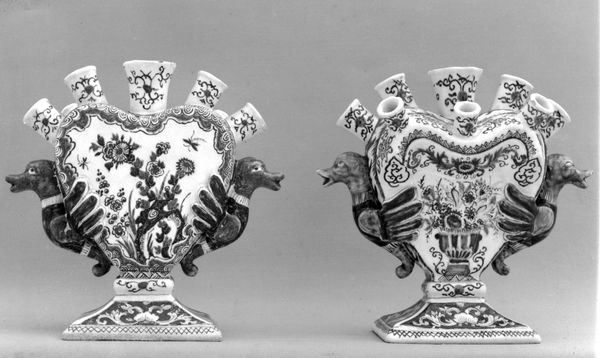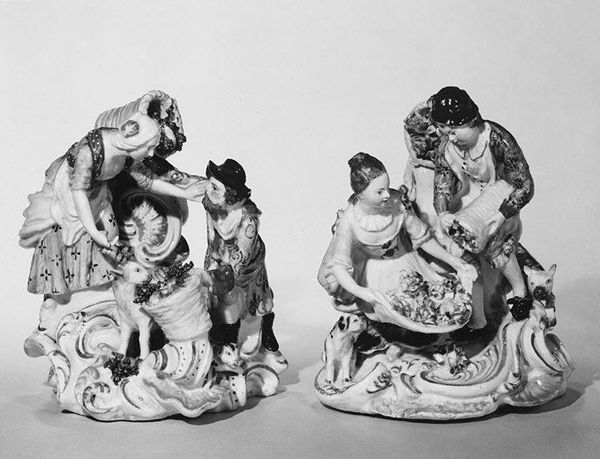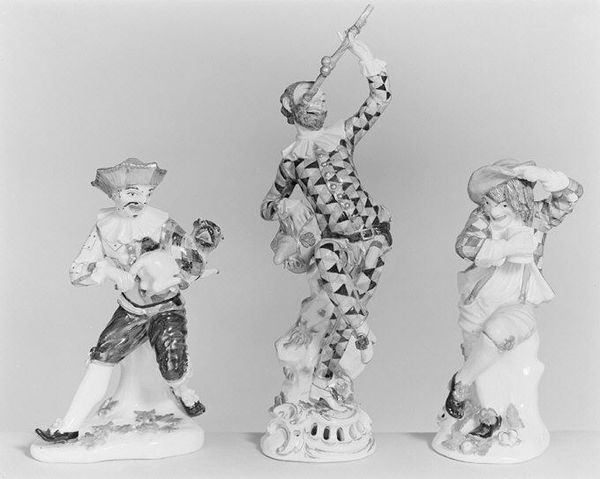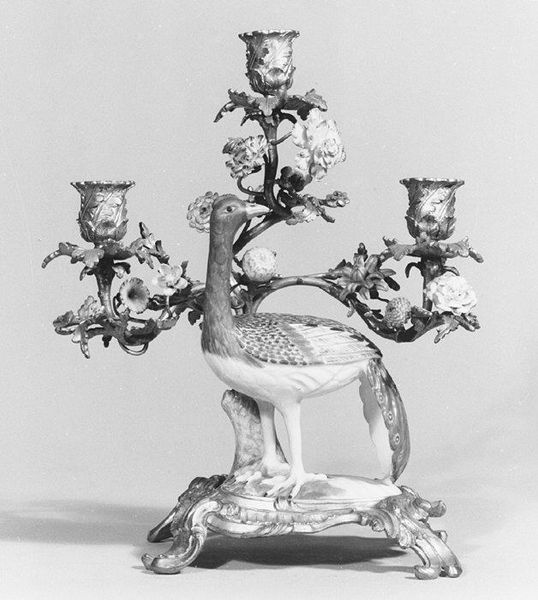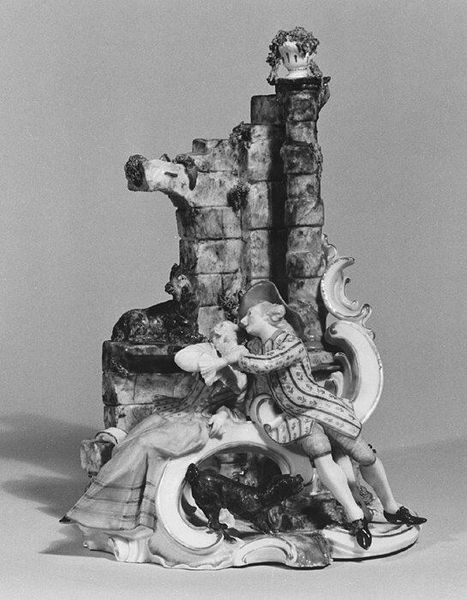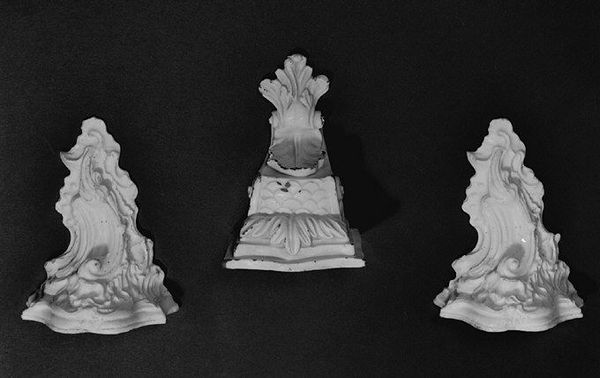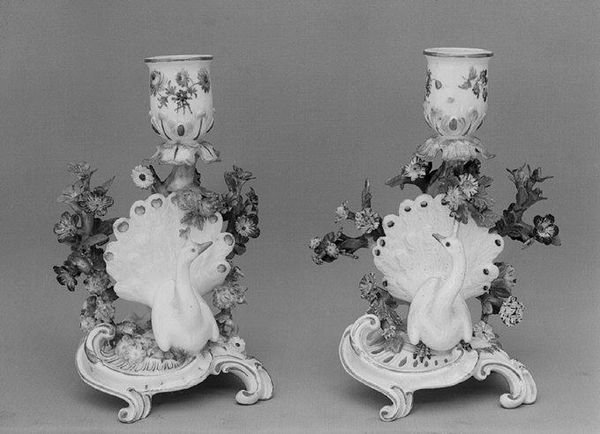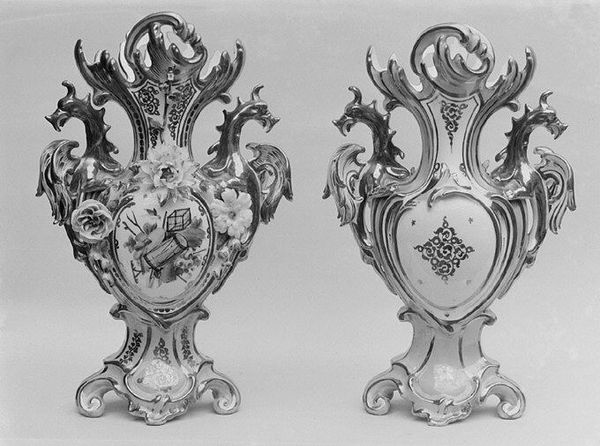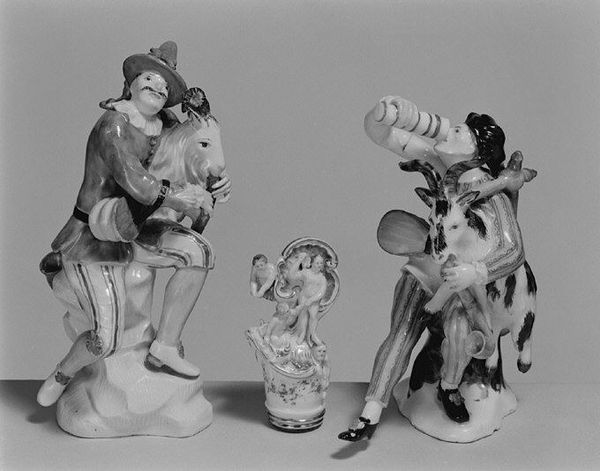
Pair of Italian comedy actors (Pulcinella and Elizabeth (?)) 1765 - 1785
0:00
0:00
Dimensions: 12 1/4 × 7 1/4 × 3 1/2 in. (31.1 × 18.4 × 8.9 cm)
Copyright: Public Domain
Curator: Let’s take a look at these porcelain figures crafted at the Real Fabrica de Buen Retiro, dating from 1765 to 1785. They’re currently housed at the Metropolitan Museum of Art. The piece is titled "Pair of Italian Comedy actors (Pulcinella and Elizabeth (?)." Editor: What a fascinating tableau! The cool, crisp white of the porcelain, combined with the theatrical poses of the figures, gives the sculptures an elegant but somehow detached air. There is also a sense of harmony with the curves of both sets of figures answering each other. Curator: Indeed. The composition showcases the mastery of the rococo style, emphasizing asymmetrical balance through gesture. The stark whiteness isn't just material, it also defines form. Light catches the intricate details of the costumes and emphasizes the clean, flowing lines of the architectural elements integrated within each sculptural cluster. Editor: I am drawn to the characters of the Commedia dell'arte figures. Pulcinella, masked and whimsical, playing his guitar for possibly Elizabeth, as the title suggests. What resonates are their cultural identities; he's a figure of cunning and the street, she is elegant. These are popular and common symbolic tropes! Curator: Precisely. The iconographic value relies on well-established traditions. But structurally, consider the vertical emphasis in Pulcinella's form countered by the horizontal lean of Elizabeth. A relationship created through shape and form, rather than any kind of interpersonal interaction. Editor: But are those choices truly divorced from intention? I'd say that posture suggests emotional distance or tension, which enriches our understanding of societal roles they embody. One's position emphasizes power, one's repose invites... well, perhaps appraisal. Curator: An interesting observation, to say the least, but maybe too much humanization and symbolism of simple balance. Perhaps we're imposing meaning that merely arises from effective three-dimensional compositional design? The visual interplay keeps the eye dancing around each form in ways I suggest is more complex than can simply be read from the figure's position. Editor: Maybe! Either way, this piece provides great tension. Considering how these two figures bounce against each other symbolically as archetypes and artistically with the lines employed makes the pair absolutely fascinating! Curator: I agree. Analyzing the spatial arrangement and the manipulation of surface texture allows us to see how an artwork speaks purely through its physical existence and the relationship each holds with each other.
Comments
No comments
Be the first to comment and join the conversation on the ultimate creative platform.
